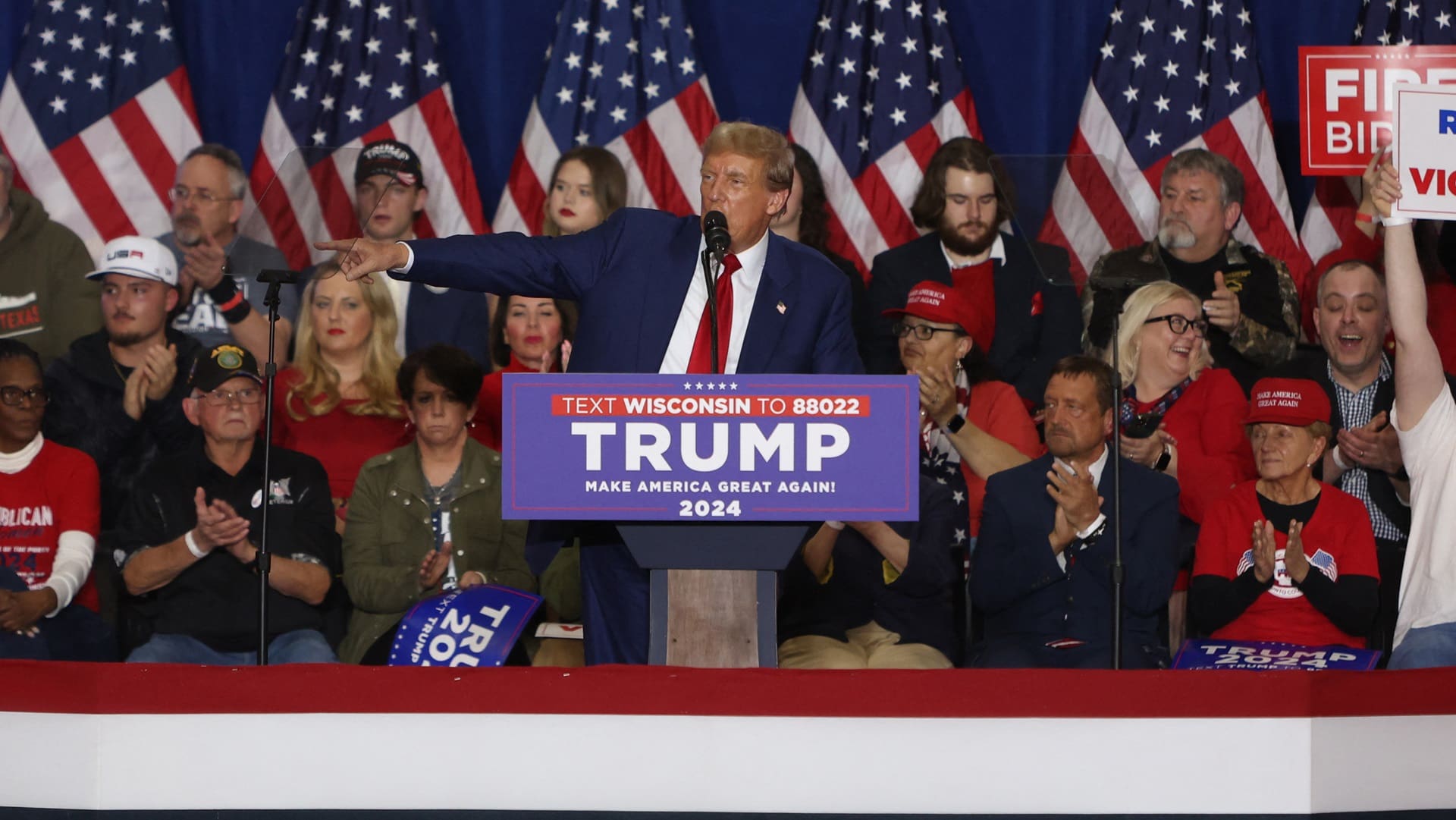The people of Wisconsin took to the polls to vote for their preferred candidate of their respective parties. The nominations have been clinched on both sides already, with incumbent President Joe Biden winning the Democratic Party’s nomination, while former President Donald Trump winning the challenging Republican Party’s nomination.
However, there was still quite a lot at stake on the Wisconsin ballot. Two referendum questions, both of which pertained to election integrity and stricter election rules.
President Trump campaigned heavily in the state leading up to election, holding a massive rally in Green Bay, Wisconsin that day. He urged his followers to vote ‘yes’ on both ballot measures.
What Are the Wisconsin Ballot Questions?
Question 1 asked voters if they approve of amending the state constitution so that it prevents private funding of the electoral process. This came in the wake of Facebook founder Mark Zuckerberg donating $400 million to a ‘get out to vote’ apparatus which is suspected to have boosted Democrat turnout with questionable practices. The scandal ended up being colloquially dubbed ‘Zuckerbucks’. Donald Trump ended up losing Wisconsin by 0.6 points, so nuances like this very much mattered in the outcome.
The second question called for another constitutional amendment, this one mandating that ‘only election officials designated by law’ can be involved in the administration of the electoral process. This again was a response to members of liberal NGOs working as ‘ballot harvesters’ or poll watchers during the 2020 election, which many believe compromised the election process.
At the urging of President Donald Trump, both measures were passed by wide margins.
The yes option in Question 1 passed by 8.8 percentage points, receiving 632,000 votes as opposed to the 529,000 votes the no option got. Question 2 was a bona fide landslide, with yes winning by 17.2 points, receiving 677,500 votes against no’s 479,500 votes.
Concerns over election integrity have been viewed as one of the further-right positions of President Trump, with his opposition to illegal immigration slowly becoming a mainstream opinion. These two ballot measures comfortably passing related to the former issue in a swing state like Wisconsin show considerable electoral strength for the former POTUS.
InteractivePolls on Twitter: "BREAKING: Decision Desk HQ projects Wisconsin Ballot Question 1 passes. Question 1 would prohibit any private funding for administering elections pic.twitter.com/Dqt3RjT6MB / Twitter"
BREAKING: Decision Desk HQ projects Wisconsin Ballot Question 1 passes. Question 1 would prohibit any private funding for administering elections pic.twitter.com/Dqt3RjT6MB
It is also important to note that constitutional amendments are not subject to gubernatorial vetoes, so Democrat Governor Tony Evers of Wisconsin cannot overwrite the outcome.
So, was it all good news for President Trump in the Badger State?
No, not all good news. This was the first time during the 2024 primary season that his vote total was surpassed by President Biden’s in a swing state. Biden got 507,000 votes, while Trump got 473,000 votes.
The uncommitted (or, in this state, ‘uninstructed’) protest vote was also a lot less successful against President Biden in Wisconsin than it was in neighbouring Michigan and Minnesota, getting only 8.4 per cent of the vote this time.
However, the GOP turnout was still higher than that of the Democrats.
597,000 people voted on the Republican side, while 573,000 people voted on the Democrat side. Evidently, this also means that President Biden ended with a higher vote share (88.6 per cent) than President Trump (79.2 per cent).
In both 2016 and 2020, it was not the individual candidate with the most votes in the primaries that ended up winning the state.
Both times, it was the party that had the higher turnout in the primary.
In 2016, both Hillary Clinton and Donald Trump finished second in their respective primary contents in Wisconsin. Clinton got 434,000 votes, while Trump got 387,000 votes. However, the overall turnout was higher on the GOP side (1.08 million vs. 1.105 million votes). President Trump ended up winning the state by 0.8 percentage points.
Similarly, in 2020, President Trump, as an incumbent, got 617,000 votes in Wisconsin, while Joe Biden got 581,000. Meanwhile, 925,000 people voted in total voted in the Democrat primary, and 630,000 voted in the Republican primary (both contents were held in the COVID-19 era). President Biden ended up winning the state by 0.6 points.
Primary Turnout in Swing States So Far
With that in mind, let's take a look at how the primary turnouts have been shaping up so far.
Former South Carolina governor Nikki Haley dropped out after Super Tuesday, so it is important to separate the contests before and after they become uncontested. President Biden never had a sufficiently funded candidate with any significant name recognition in the primary (he does have Robert F. Kennedy Jr challenging him as an independent in the general election, however). Therefore, contests where two or more major candidates were running on the Republican side are skewed towards the GOP in terms of turnout. These primaries in swing states were:
| STATE | GOP Turnout | DEM Turnout |
| New Hampshire | 324,000 | 124,000 |
| Michigan | 1,115,000 | 769,000 |
| Maine | 108,000 | 63,500 |
| North Carolina | 1,070,000 | 694,500 |
| Virginia | 699,000 | 358,000 |
Unfortunately, we cannot include the state of Nevada, as Republicans were forced to hold a split caucus and primary on two different dates due to laws passed by the former Democrat leadership of the state, which went against RNC rules.
After Governor Haley dropped out, and both races became uncontested, these were the turnout totals in the primary elections:
| STATE | GOP turnout | DEM Turnout |
| Georgia | 589,000 | 290,000 |
| Arizona | 624,000 | 420,000 |
| Ohio | 1,122,000 | 524,000 |
| Wisconsin | 597,000 | 573,000 |
The only competitive state left to hold its primaries is Pennsylvania, on 23 April. Donald Trump is currently leading the RealClearPolitics polling aggregate nationally by 1 point head-to-head against Joe Biden, and by 2.5 points in the 5-way race with RFK Jr, West, and Stein added.
Related articles:








